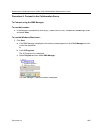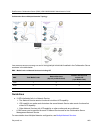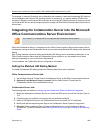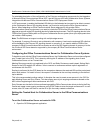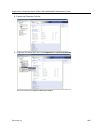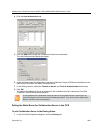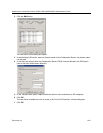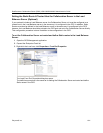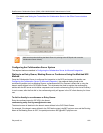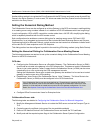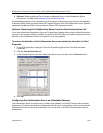
RealPresence Collaboration Server (RMX) 1500/1800/2000/4000 Administrator’s Guide
Polycom®, Inc. 1007
For a detailed description of the configuration of the Polycom conferencing components for the integration
in Microsoft Office Communications Server 2007, see the Polycom HDX and Collaboration Server Systems
Integration with Microsoft Office Communications Server 2007 Deployment Guide.
In ICE environment, to enable the Matched URI dialing in the federated environment to be able to connect
to the Collaboration Server SIP signaling domain, you must also configure the Office Communications
Server. When federating an Office Communications Server edge server with another Office
Communications Server environment, you need to include the FQDN of the Office Communications Server
edge server as well as the SIP signaling domain for federated environment. The SIP signaling domain is the
FQDN of the Polycom DMA system or a Polycom Collaboration Server system (when your deployment does
not include a DMA system).
Note: The RMX does not support working with multiple edge servers.
For example, if company B wants to set up federation with company A and receive and send SIP calls that
will be handled by the Polycom SIP signaling domain in company A, you need to add the FQDN of the
company A Office Communications Server domain as well as the SIP signaling domain of company A to the
list of Internal SIP Server domains supported by the company B Office Communications Server
environment.
Configuring the Office Communications Server for Collaboration Server Systems
To be able to work with the Office Communications Server, the Collaboration Server unit must be configured
as a Trusted Host in the OCS. This is done by defining the IP address of the signaling host of each
Collaboration Server unit as Trusted Host.
Meeting Rooms are usually not registered to the OCS, and Static Routes are used instead. Setting Static
Routes in the OCS enables SIP entities / UAs to connect to conferences without explicit registration of
conferences with the OCS.
Routing is performed by the OCS based on the comparison between the received URI and the provisioned
static route pattern. If a match is found, the request is forwarded to the next hop according to the defined
hop’s address.
This is the recommended working method. It alleviates the need to create a user account in the OCS for
each Meeting Room and Entry Queue. This also allows users to join ongoing conferences hosted on the
MCU without registering all these conferences with OCS.
Entry Queues can also be for Ad-hoc conferencing enabling Office Communicator clients to dial to the Entry
Queue and create a new ongoing conference using DTMF codes to enter the target conference ID. In such
a case, other OC users will have to use that ID to join the newly created conference.
Setting the Trusted Host for Collaboration Server in the Office Communications
Server
To set the Collaboration Server as trusted in OCS:
1 Open the OCS Management application.




